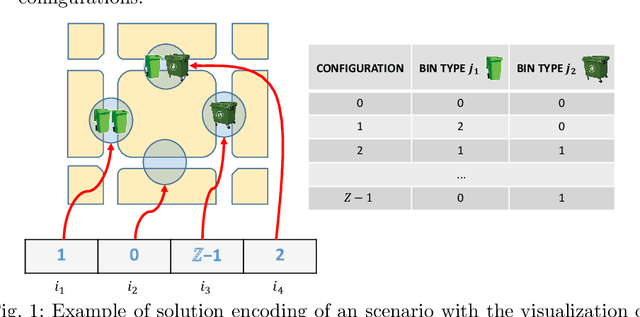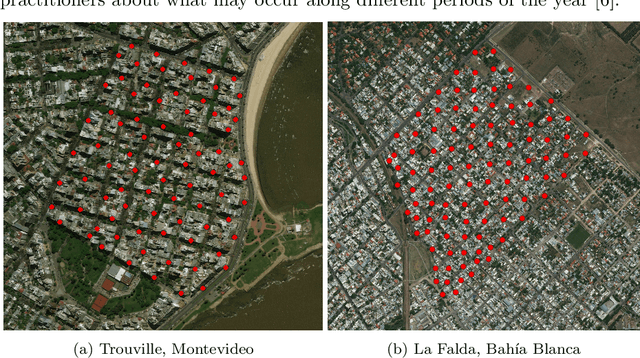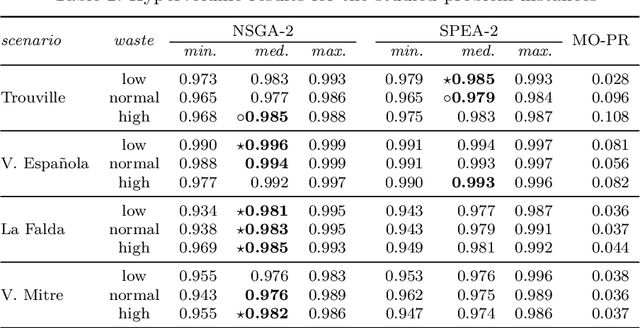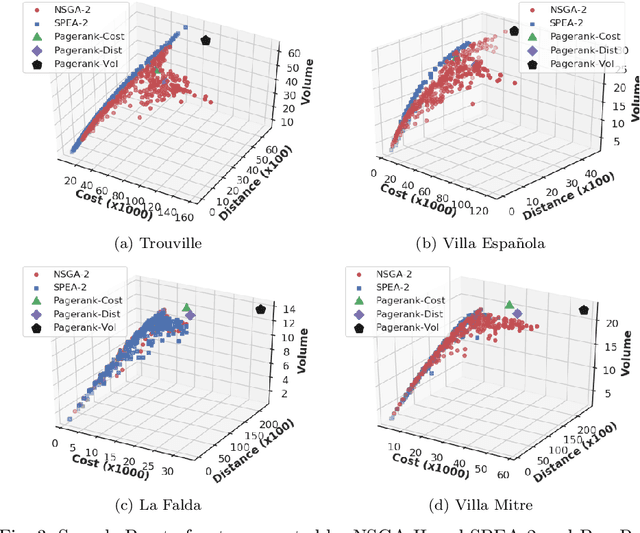Diego Rossit
Modeling and solving an integrated periodic vehicle routing and capacitated facility location problem in the context of solid waste collection
Apr 14, 2025Abstract:Few activities are as crucial in urban environments as waste management. Mismanagement of waste can cause significant economic, social, and environmental damage. However, waste management is often a complex system to manage and therefore where computational decision-support tools can play a pivotal role in assisting managers to make faster and better decisions. In this sense, this article proposes, on the one hand, a unified optimization model to address two common waste management system optimization problem: the determination of the capacity of waste bins in the collection network and the design and scheduling of collection routes. The integration of these two problems is not usual in the literature since each of them separately is already a major computational challenge. On the other hand, two improved exact formulations based on mathematical programming and a genetic algorithm (GA) are provided to solve this proposed unified optimization model. It should be noted that the GA considers a mixed chromosome representation of the solutions combining binary and integer alleles, in order to solve realistic instances of this complex problem. Also, different genetic operators have been tested to study which combination of them obtained better results in execution times on the order of that of the exact solvers. The obtained results show that the proposed GA is able to match the results of exact solvers on small instances and, in addition, can obtain feasible solutions on large instances, where exact formulations are not applicable, in reasonable computation times.
Enhancing Mass Customization Manufacturing: Multiobjective Metaheuristic Algorithms for flow shop Production in Smart Industry
Jul 26, 2024Abstract:The current landscape of massive production industries is undergoing significant transformations driven by emerging customer trends and new smart manufacturing technologies. One such change is the imperative to implement mass customization, wherein products are tailored to individual customer specifications while still ensuring cost efficiency through large-scale production processes. These shifts can profoundly impact various facets of the industry. This study focuses on the necessary adaptations in shop-floor production planning. Specifically, it proposes the use of efficient evolutionary algorithms to tackle the flowshop with missing operations, considering different optimization objectives: makespan, weighted total tardiness, and total completion time. An extensive computational experimentation is conducted across a range of realistic instances, encompassing varying numbers of jobs, operations, and probabilities of missing operations. The findings demonstrate the competitiveness of the proposed approach and enable the identification of the most suitable evolutionary algorithms for addressing this problem. Additionally, the impact of the probability of missing operations on optimization objectives is discussed.
Soft computing methods for multiobjective location of garbage accumulation points in smart cities
Jun 25, 2019



Abstract:This article describes the application of soft computing methods for solving the problem of locating garbage accumulation points in urban scenarios. This is a relevant problem in modern smart cities, in order to reduce negative environmental and social impacts in the waste management process, and also to optimize the available budget from the city administration to install waste bins. A specific problem model is presented, which accounts for reducing the investment costs, enhance the number of citizens served by the installed bins, and the accessibility to the system. A family of single- and multi-objective heuristics based on the PageRank method and two mutiobjective evolutionary algorithms are proposed. Experimental evaluation performed on real scenarios on the cities of Montevideo (Uruguay) and Bahia Blanca (Argentina) demonstrates the effectiveness of the proposed approaches. The methods allow computing plannings with different trade-off between the problem objectives. The computed results improve over the current planning in Montevideo and provide a reasonable budget cost and quality of service for Bahia Blanca.
 Add to Chrome
Add to Chrome Add to Firefox
Add to Firefox Add to Edge
Add to Edge